【十三】Golang 通道
💢欢迎来到张胤尘的开源技术站
💥开源如江河,汇聚众志成。代码似星辰,照亮行征程。开源精神长,传承永不忘。携手共前行,未来更辉煌💥
文章目录
- 通道
- 通道声明
- 初始化
- 缓冲机制
- 无缓冲通道
- 代码示例
- 带缓冲通道
- 代码示例
- 通道操作
- 发送数据
- 接收数据
- 单向通道
- 单向通道的用途
- 代码示例
- 多路复用
- 代码示例
- 通道复用器的实现
- 超时机制
- `time.After`
- `context`
- 关闭通道
- 检查通道是否关闭
- 获取通道长度
- 获取通道容量
- 源码解析
- 通道结构体
- 创建通道
- 函数原型
- 函数内容
- 发送数据
- 函数原型
- 函数内容
- 接收数据
- 函数原型
- 函数内容
- 关闭通道
- 函数原型
- 函数内容
通道
在传统的并发编程中,多个线程或进程之间通常通过共享内存来通信。这种模型虽然高效,但容易引发 竞争条件 和 死锁 等问题。为了避免这些问题,程序员在开发时需要使用复杂的同步机制(例如:锁、信号量等)来保护共享数据。但是 golang 采用了不同的思路:避免共享内存,通过通信来实现并发。
示意图所下所示:

通道就是 golang 中实现 Goroutine 之间通信的机制。它是一种 类型化的通道,允许多个 Goroutine 之间安全地传递数据。通道是 Golang 并发模型的核心,它解决了传统并发编程中共享内存带来的复杂性和风险。
本篇文章主要介绍的是通道,有关于协程、并发编程等相关知识点请关注后续文章《
Golang协程》、《Golang并发编程》。
通道声明
使用 var 关键字声明通道变量。如下所示:
var ch chan int
声明后,ch 是一个未初始化的通道,其默认值为 nil。
初始化
使用 make 函数初始化通道,如下所示:
ch = make(chan int)
也可以使用 make 函数创建一个带缓冲区的通道,如下所示:
ch = make(chan int, 10)
缓冲机制
通道分为 无缓冲通道 和 带缓冲通道,它们在行为和使用场景上有一些关键区别。
无缓冲通道
在初始化的小结中,使用 make 函数进行初始化通道,当没有指定通道的容量,或者说通道的容量大小为 0 时,称为无缓冲通道。
无缓冲通道在发送数据和接收数据时存在如下的特点:
- 发送操作:发送数据时,发送方会阻塞,直到有接收方准备接收数据。
- 接收操作:接收方会阻塞,直到有发送方发送数据。
- 无缓冲通道的发送和接收操作是同步的,必须有发送方和接收方同时准备好,才能完成通信。
代码示例
package mainimport ("fmt""sync""time"
)func main() {unbufferedChan := make(chan int) // 创建无缓冲通道var wg sync.WaitGroupwg.Add(1)go func() {defer wg.Done()fmt.Println("receiver is waiting...") // receiver is waiting...time.Sleep(time.Second * 3) // 模拟3秒的准备时间data := <-unbufferedChan // 在这行函数执行之前,发送方处于阻塞状态fmt.Println("received:", data)}()unbufferedChan <- 42 // 发送方阻塞,直到接收方准备好close(unbufferedChan) // 关闭通道wg.Wait()
}
带缓冲通道
当指定了通道的容量,例如 make(chan int, 10),则称为带缓冲通道。
带缓冲通道在发送数据和接收数据时存在如下的特点:
- 发送操作:发送数据时,如果缓冲区未满,数据会被放入缓冲区,发送方不会阻塞;如果缓冲区已满,发送方会阻塞,直到缓冲区有空间。
- 接收操作:接收方从缓冲区中取出数据,如果缓冲区为空,接收方会阻塞,直到有数据可用。
- 带缓冲通道的发送和接收操作是异步的,发送方和接收方不需要同时准备好。缓冲区的存在允许数据在发送方和接收方之间暂时存储。
代码示例
package mainimport ("fmt""sync""time"
)func main() {bufferedChan := make(chan int, 2) // 创建带缓冲通道,容量大小为2var wg sync.WaitGroupwg.Add(1)go func() {defer wg.Done()fmt.Println("receiver is waiting...")// for {// select {// case data, ok := <-bufferedChan:// if ok {// fmt.Println("received:", data)// } else {// fmt.Println("bufferedChan closed")// return// }// }// }for {time.Sleep(time.Second * 5) // 模拟接收方不从缓冲通道中接收数据}}()bufferedChan <- 42bufferedChan <- 43bufferedChan <- 44 // 如果接收方一直未接收数据,则在此处会发送阻塞fmt.Println("send data over ...")close(bufferedChan) // 关闭通道wg.Wait()
}
通道操作
发送数据
使用 <- 操作符将数据发送到通道,如下所示:
package mainfunc main() {ch := make(chan int)ch <- 10 // 向通道中发送一个 10close(ch) // 关闭通道
}
接收数据
使用 <- 操作符从通道中读取数据,如下所示:
package mainimport "fmt"func main() {ch := make(chan int, 1)ch <- 10 // 向通道中发送一个 10data := <-ch // 通道中读取一个数据fmt.Println(data) // 10close(ch) // 关闭通道
}
单向通道
golang 中提供了单向通道这么一种特殊的通道类型,它只能用于发送或接收数据,而不能同时进行发送和接收操作。单向通道在类型声明上与普通通道(双向通道)有所不同,主要用于限制通道的使用方式,从而提高代码的可读性和安全性。
单向通道有如下两种类型:
- 只发送通道:用于发送数据,但不能接收数据。
chan<- Type
- 只接收通道:用于接收数据,但不能发送数据。
<-chan Type
单向通道的用途
单向通道的主要用途是限制通道的使用范围,避免在函数或方法中滥用通道的发送和接收功能。例如:
- 当一个函数只需要从通道中读取数据时,使用只接收通道可以明确表示该函数的意图。
- 当一个函数只需要向通道中写入数据时,使用只发送通道可以避免意外读取通道中的数据。
代码示例
package mainimport ("fmt""sync"
)func producer(ch chan<- int, wg *sync.WaitGroup) { // ch 参数:一个只发送通道defer wg.Done()for i := 0; i < 5; i++ {ch <- i // 向通道发送数据fmt.Printf("sent: %d\n", i)}close(ch) // 关闭通道
}func consumer(ch <-chan int, wg *sync.WaitGroup) { // ch 参数:一个只接收通道defer wg.Done()for {select {case data, ok := <-ch: // 读取通道数据if ok {fmt.Printf("received: %d\n", data)} else {fmt.Println("chan closed ...")return}}}
}func main() {var wg sync.WaitGroupch := make(chan int) // 创建一个双向通道wg.Add(2)// received: 0// sent: 0// sent: 1// received: 1// received: 2// sent: 2// sent: 3// received: 3// received: 4// sent: 4// chan closed ...go consumer(ch, &wg) // 接收者go producer(ch, &wg) // 发送者wg.Wait()
}多路复用
通道的多路复用机制是一种用于处理多个通道操作的技术,它允许程序同时等待多个通道的读写操作。这种机制的核心是 select...case 语句,它提供了对多个通道操作的并发处理能力。
select {
case <-ch1:// 处理 ch1 的读操作
case data := <-ch2:// 处理 ch2 的读操作,并将读取到的数据赋值给 data
case ch3 <- value:// 向 ch3 中发送值
default:// 如果没有通道准备好,则执行默认逻辑
}
另外需要强调的是,如果多个通道同时准备好,select...case 会随机选择一个通道执行操作;如果没有任何一个通道准备好,则 select 会陷入阻塞,除非有 default 分支执行。
需要注意的是,上面提到的 通道准备好 是个口语,对于接收操作来说需要满足以下两个条件中的任意一个:
- 通道中有数据可读:如果通道的缓冲区中有数据,或者有发送操作正在等待发送数据到通道中,那么接收操作就准备好。
- 通道已关闭:即使通道中没有数据,如果通道已经被关闭,接收操作也会立即返回零值,并且
ok为false(如果使用了data, ok := <-ch的形式)。
对发送操作来说也需要满足以下两个条件中的任意一个:
- 通道中有空间可写:如果通道是无缓冲的,并且有等待接收的协程,或者通道是缓冲的且缓冲区中有空闲位置,那么发送操作就准备好。
- 通道已关闭:如果通道已经被关闭,发送操作会触发
panic("send on closed channel")。
代码示例
通过 select 同时处理多个通道,如下所示:
package mainimport ("fmt""time"
)func main() {ch1 := make(chan string) // 创建通道 ch1ch2 := make(chan string) // 创建通道 ch2go func() { // 每间隔 1 秒,向通道 ch1 中发送数据,一共发送 10 条数据defer close(ch1)for i := 1; i <= 10; i++ {ch1 <- "message from ch1"time.Sleep(1 * time.Second)}}()go func() { // 每间隔 2 秒,向通道 ch2 中发送数据,一共发送 10 条数据defer close(ch2)for i := 1; i <= 10; i++ {ch2 <- "message from ch2"time.Sleep(2 * time.Second)}}()// no data reception ...// recived: message from ch2// recived: message from ch1// no data reception ...// no data reception ...// recived: message from ch1// no data reception ...// recived: message from ch2// recived: message from ch1// no data reception ...// recived: message from ch1// no data reception ...// no data reception ...// recived: message from ch1// recived: message from ch2// no data reception ...// recived: message from ch1// no data reception ...// recived: message from ch1// recived: message from ch2// no data reception ...// recived: message from ch1// no data reception ...// no data reception ...// recived: message from ch1// recived: message from ch2// no data reception ...// recived: message from ch1// no data reception ...// recived: message from ch2// ch1 chan closed ...// recived: message from ch2// recived: message from ch2// recived: message from ch2// recived: message from ch2// ch2 chan closed ...// both channels closed. exiting...ch1_s, ch2_s := true, truefor ch1_s || ch2_s {select {case data, ok := <-ch1:if ok {fmt.Println("recived: ", data)} else if ch1_s {fmt.Println("ch1 chan closed ...")ch1_s = false}case data, ok := <-ch2:if ok {fmt.Println("recived: ", data)} else if ch2_s {fmt.Println("ch2 chan closed ...")ch2_s = false}default:fmt.Println("no data reception ...")time.Sleep(time.Second)}}fmt.Println("both channels closed. exiting...")
}通道复用器的实现
在某些复杂场景中,可能需要手动实现通道复用器。例如,可以将多个通道的输出合并到一个通道中,从而简化后续的处理逻辑。
下面是一个简单的通道复用器实现思路:
package mainimport ("fmt""sync""time"
)func send(ch chan<- int) { // 模拟数据发送,每秒发送一个数字defer close(ch)for i := 1; i <= 10; i++ {ch <- itime.Sleep(time.Second)}
}func multiplexer(channels ...<-chan int) <-chan int { // 合并多个通道数据,函数返回最终的一个只读通道out := make(chan int)go func() {defer close(out)var wg sync.WaitGroupfor _, ch := range channels {wg.Add(1)go func(ch <-chan int) {defer wg.Done()for {select {case data, ok := <-ch:if ok {out <- data // 数据发送到最终的只读通道} else {return}}}}(ch)}wg.Wait()}()return out
}func main() {ch1 := make(chan int) // 创建通道 ch1ch2 := make(chan int) // 创建通道 ch2ch3 := make(chan int) // 创建通道 ch3go send(ch1)go send(ch2)go send(ch3)ret_ch := multiplexer(ch1, ch2, ch3) // 接收返回的通道for data := range ret_ch { // 从只读通道中获取合并后的数据fmt.Printf("ret received: %d\n", data)}fmt.Println("ret chan closed ...")
}
超时机制
在 golang 中,通道的超时机制可以通过 time.After 或 context 两种方式来实现。
time.After
time.After 是一个返回通道的函数,会在指定的超时时间后向通道发送一个时间值。结合 select...case 语句,可以实现超时逻辑。如下所示:
package mainimport ("fmt""time"
)func main() {ch := make(chan string) // 创建通道go func() {time.Sleep(3 * time.Second) // 模拟耗时操作ch <- "任务完成"}()select {case res := <-ch:fmt.Println(res)case <-time.After(2 * time.Second): // 设置超时为2秒fmt.Println("超时退出") // 最终打印 超时退出}
}
time.After 是一种非常简洁且易于理解的超时机制,特别适合简单的超时场景。但是需要注意的是,time.After 会在后台启动一个定时器,即使 select 提前退出,定时器也不会立刻回收,可能导致轻微的资源泄漏。
context
context 是 golang 中用于传递可取消信号、超时时间等的工具。通过 context.WithTimeout 创建一个带有超时功能的上下文,其 Done() 方法返回一个通道,用于超时控制,如下所示:
package mainimport ("context""fmt""time"
)func main() {ch := make(chan string) // 创建通道ctx, cancel := context.WithTimeout(context.Background(), 2*time.Second)defer cancel() // cancel() 会释放与上下文相关的资源,避免内存泄漏go func() {time.Sleep(3 * time.Second) // 模拟耗时操作ch <- "任务完成"}()select {case res := <-ch:fmt.Println(res)case <-ctx.Done(): // 监听超时信号fmt.Println("超时退出", ctx.Err())}
}
在上面的这个代码中:
context.WithTimeout创建了一个带有超时的上下文,并设置超时时间为 2 秒。defer cancel()确保在函数返回时调用cancel(),释放资源。- 如果任务在超时前完成,
cancel()会被调用,终止所有监听ctx.Done()的协程。
总的来说,context 更适用于复杂的并发场景,例如多个任务的超时控制、任务取消等;time.After 更适用于简单的超时控制,例如单个任务的超时。
关闭通道
使用 close 函数关闭通道,如下所示:
package mainfunc main() {ch := make(chan int, 5)close(ch) // 关闭通道
}
需要注意的是,当关闭通道后,不能再向通道发送数据,但可以继续从通道中接收数据。
检查通道是否关闭
接收数据时会有两个返回值,一个是数据另一个是布尔值,用于判断通道是否关闭,如下所示:
package mainimport ("fmt""sync"
)func main() {ch := make(chan int, 5)var wg sync.WaitGroupwg.Add(1)go func() {defer wg.Done()for {select {case data, ok := <-ch: // data 表示数据,ok 表示通道是否关闭if ok {// received: 11// received: 10// received: 15fmt.Println("received:", data)} else {fmt.Println("ch closed") // ch closedreturn}}}}()ch <- 11ch <- 10ch <- 15close(ch) // 关闭通道wg.Wait()
}
获取通道长度
使用 len 函数获取通道的当前长度,如下所示:
package mainimport "fmt"func main() {ch := make(chan int, 5)fmt.Println(len(ch)) // 0ch <- 10fmt.Println(len(ch)) // 1close(ch) // 关闭通道
}
获取通道容量
使用 cap 函数获取通道的当前容量,如下所示:
package mainimport "fmt"func main() {ch := make(chan int, 5)fmt.Println(cap(ch)) // 5ch1 := make(chan int)fmt.Println(cap(ch1)) // 0close(ch) // 关闭通道 chclose(ch1) // 关闭通道 ch1
}源码解析
针对通道的源代码进行解析,从以下几个方面:
- 创建通道
- 发送数据
- 接收数据
- 关闭通道
通道结构体
源码位置:src/runtime/chan.go
type hchan struct {qcount uint // total data in the queuedataqsiz uint // size of the circular queuebuf unsafe.Pointer // points to an array of dataqsiz elementselemsize uint16closed uint32timer *timer // timer feeding this chanelemtype *_type // element typesendx uint // send indexrecvx uint // receive indexrecvq waitq // list of recv waiterssendq waitq // list of send waiters// lock protects all fields in hchan, as well as several// fields in sudogs blocked on this channel.//// Do not change another G's status while holding this lock// (in particular, do not ready a G), as this can deadlock// with stack shrinking.lock mutex
}
qcount:当前通道中存储的数据数量,对于无缓冲通道,qcount的值通常为 0 或 1。dataqsiz:对于缓冲通道,dataqsiz表示缓冲区可以存储的最大元素数量。对于无缓冲通道,dataqsiz为 0。buf:指向缓冲区的指针。缓冲区是一个数组,用于存储通道中的数据。仅对缓冲通道有效。无缓冲通道的buf为nil。elemsize:通道中每个元素的大小(以字节为单位)。closed:标记通道是否已关闭。关闭的通道不能再次发送数据,但可以继续接收数据直到缓冲区为空。timer:指向一个定时器,该定时器与通道相关联(例如,用于超时操作)。elemtype:指向通道中元素的类型信息,用于在运行时检查通道中存储的数据类型是否正确。sendx:用于管理缓冲区的环形队列,记录下一次发送操作在缓冲区中的索引。recvx:用于管理缓冲区的环形队列,记录下一次接收操作在缓冲区中的索引。recvq:存储等待接收的协程队列,在发送操作中,如果缓冲区已满且没有等待接收的协程,则发送协程会被加入到sendq。sendq:存储等待发送的协程队列,在接收操作中,如果缓冲区为空且没有等待发送的协程,则接收协程会被加入到recvq。lock:保护hchan结构体中所有字段的互斥锁,确保通道操作的线程安全性。在发送、接收和关闭操作中,lock用于防止多个协程同时修改通道的状态。
创建通道
在 golang 的运行时中,创建通道的代码会被编译为对 makechan 的调用。如下所示:
package mainfunc main() {ch := make(chan int, 1)
}
编译成汇编代码如下所示:
0x001a 00026 CALL runtime.makechan(SB)
以上汇编代码只是部分截取,请注意甄别。
makechan 函数是运行时中用于创建通道的核心函数。它初始化了一个 hchan 结构体,并根据指定的类型和缓冲区大小分配内存。
源码位置:src/runtime/chan.go
函数原型
func makechan(t *chantype, size int) *hchan {// ...
}
t *chantype:通道的类型信息,包含通道中元素的类型。size int:通道的缓冲区大小。如果为 0,则创建无缓冲通道;如果大于 0,则创建有缓冲通道。- 返回一个初始化后的
hchan结构体指针。
函数内容
func makechan(t *chantype, size int) *hchan {elem := t.Elem // 从通道类型 t 中获取通道中元素的类型信息// compiler checks this but be safe.// 检查通道中元素的大小是否超过 64KB,如果超过,抛出异常if elem.Size_ >= 1<<16 {throw("makechan: invalid channel element type")}// 确保 hchan 的大小是最大对齐单位的倍数,并且元素的对齐要求不超过最大对齐单位// maxAlign = 8if hchanSize%maxAlign != 0 || elem.Align_ > maxAlign {throw("makechan: bad alignment")}// 计算缓冲区的总大小:elem.Size_ * sizemem, overflow := math.MulUintptr(elem.Size_, uintptr(size))// 检查是否发生溢出,或者缓冲区大小超过最大分配限制,或者缓冲区大小小于0,抛出异常if overflow || mem > maxAlloc-hchanSize || size < 0 {panic(plainError("makechan: size out of range"))}// Hchan does not contain pointers interesting for GC when elements stored in buf do not contain pointers.// buf points into the same allocation, elemtype is persistent.// SudoG's are referenced from their owning thread so they can't be collected.// TODO(dvyukov,rlh): Rethink when collector can move allocated objects.// 内存分配var c *hchanswitch {case mem == 0:// 如果缓冲区大小为 0(无缓冲通道)或元素大小为 0,仅分配 hchan 的内存// Queue or element size is zero.c = (*hchan)(mallocgc(hchanSize, nil, true))// Race detector uses this location for synchronization.// 初始化通道的缓冲区的指针// buf 指向 hchan 结构体本身,表示没有独立的缓冲区c.buf = c.raceaddr()case !elem.Pointers():// 如果元素类型不包含指针(如基本类型或数组),将 hchan 和缓冲区分配在同一块内存中// Elements do not contain pointers.// Allocate hchan and buf in one call.c = (*hchan)(mallocgc(hchanSize+mem, nil, true))// 初始化通道的缓冲区的指针// 将 c.buf 指向 hchan 结构体之后的内存区域,该区域用于存储缓冲区数据c.buf = add(unsafe.Pointer(c), hchanSize)default:// 如果元素类型包含指针(如结构体或切片),分别分配 hchan 和缓冲区的内存// 因为 gc 需要跟踪指针类型的内存分配// Elements contain pointers.c = new(hchan)// 初始化通道的缓冲区的指针c.buf = mallocgc(mem, elem, true)}// 设置通道的元素大小c.elemsize = uint16(elem.Size_)// 设置通道的元素类型c.elemtype = elem// 设置通道的缓冲区大小c.dataqsiz = uint(size)// 初始化通道的互斥锁lockInit(&c.lock, lockRankHchan)// 如果启用了通道调试模式,打印调试信息if debugChan {print("makechan: chan=", c, "; elemsize=", elem.Size_, "; dataqsiz=", size, "\n")}// 返回通道指针return c
}
具体分配内存 mallocgc 函数原型如下所示:
func mallocgc(size uintptr, typ *_type, needzero bool) unsafe.Pointer {// ...
}
size:分配的内存大小。typ:分配内存的类型信息。needzero:是否需要将分配的内存清零。
更多关于
mallocgc函数的内容本文章不再赘述,感兴趣的同学请关注后续文章《Golang内存模型》。
发送数据
在 golang 的运行时中,发送操作的代码会被编译为对 chansend1 的调用。如下所示:
package mainfunc main() {ch := make(chan int, 1)ch <- 1
}
编译成汇编代码如下所示:
0x001a 00026 CALL runtime.makechan(SB)
# ...
0x0026 00038 CALL runtime.chansend1(SB)
以上汇编代码只是部分截取,请注意甄别。
而在 chansend1 的函数内部,又是对 chansend 的调用,如下所示:
源码位置:src/runtime/chan.go
// entry point for c <- x from compiled code.
//
//go:nosplit
func chansend1(c *hchan, elem unsafe.Pointer) {chansend(c, elem, true, getcallerpc())
}
函数原型
func chansend(c *hchan, ep unsafe.Pointer, block bool, callerpc uintptr) bool {// ...
}
c *hchan:指向通道的指针。ep unsafe.Pointer:指向数据的指针。block bool:是否阻塞发送。- 如果
block == true,发送操作会在通道缓冲区满或没有接收方时阻塞,直到可以发送数据。 - 如果
block == false,发送操作是非阻塞的。如果当前无法发送数据(缓冲区满或没有接收方),函数会立即返回false。
- 如果
callerpc uintptr:程序计数器(PC)的值,主要用于调试和竞态检测。- 发送操作是否成功。
函数内容
func chansend(c *hchan, ep unsafe.Pointer, block bool, callerpc uintptr) bool {// 检查通道指针 c 是否为 nilif c == nil {if !block {// 如果通道为 nil 且是非阻塞发送,直接返回 falsereturn false}// 如果是阻塞发送,则协程会阻塞并抛出异常gopark(nil, nil, waitReasonChanSendNilChan, traceBlockForever, 2)throw("unreachable")}// 如果启用了通道调试模式,打印调试信息if debugChan {print("chansend: chan=", c, "\n")}// 如果启用了竞态检测器,记录对通道的读操作if raceenabled {racereadpc(c.raceaddr(), callerpc, abi.FuncPCABIInternal(chansend))}// Fast path: check for failed non-blocking operation without acquiring the lock.//// After observing that the channel is not closed, we observe that the channel is// not ready for sending. Each of these observations is a single word-sized read// (first c.closed and second full()).// Because a closed channel cannot transition from 'ready for sending' to// 'not ready for sending', even if the channel is closed between the two observations,// they imply a moment between the two when the channel was both not yet closed// and not ready for sending. We behave as if we observed the channel at that moment,// and report that the send cannot proceed.//// It is okay if the reads are reordered here: if we observe that the channel is not// ready for sending and then observe that it is not closed, that implies that the// channel wasn't closed during the first observation. However, nothing here// guarantees forward progress. We rely on the side effects of lock release in// chanrecv() and closechan() to update this thread's view of c.closed and full().// 如果是非阻塞发送并且通道未关闭但缓冲区已满,直接返回 false// 前置判断,避免进入锁的开销if !block && c.closed == 0 && full(c) {return false}// 如果启用了阻塞剖析,记录当前时间戳var t0 int64if blockprofilerate > 0 {t0 = cputicks()}// 锁定通道的互斥锁,确保操作的原子性lock(&c.lock)// 如果通道已关闭,解锁并抛出异常// 阅读到此处时,考虑是否改为使用原子操作,代替 lock/unlock?// 可?不可?// 记录吧!!!if c.closed != 0 {unlock(&c.lock)panic(plainError("send on closed channel"))}// 如果有等待接收的协程,直接将数据发送给接收协程,跳过缓冲区if sg := c.recvq.dequeue(); sg != nil {// Found a waiting receiver. We pass the value we want to send// directly to the receiver, bypassing the channel buffer (if any).// 调用 send 函数完成数据传递,并解锁send(c, sg, ep, func() { unlock(&c.lock) }, 3)return true}// 如果没有等待接收的协程,则判断缓冲区是否有空间if c.qcount < c.dataqsiz {// Space is available in the channel buffer. Enqueue the element to send.// 计算缓冲区中下一个写入位置的指针qp := chanbuf(c, c.sendx)if raceenabled {// 通知竞态检测器当前操作的上下文信息,对缓冲区的写入操作被正确跟踪racenotify(c, c.sendx, nil)}// 将要发送的数据从 ep 复制到缓冲区的 qp 位置typedmemmove(c.elemtype, qp, ep)// 更新发送索引为下一个写入位置c.sendx++// 如果 c.sendx 达到缓冲区大小,则将其重置为 0,实现环形缓冲区的效果if c.sendx == c.dataqsiz {c.sendx = 0}// 每次成功写入数据后,c.qcount 增加 1c.qcount++// 解锁通道的互斥锁unlock(&c.lock)// 写入成功,返回 truereturn true}// 如果缓冲区已满且是非阻塞发送,解锁并返回 falseif !block {unlock(&c.lock)return false}// 下面是阻塞发送的代码逻辑// Block on the channel. Some receiver will complete our operation for us.// 获取当前正在运行的协程的指针gp := getg()// 分配一个 sudog 对象,sudog 是 golang 运行时中用于表示协程在通道操作中等待的结构体mysg := acquireSudog()mysg.releasetime = 0if t0 != 0 {mysg.releasetime = -1}// No stack splits between assigning elem and enqueuing mysg// on gp.waiting where copystack can find it.// 下面这些是初始化 sudog 对象属性mysg.elem = ep // 指向要发送的数据指针mysg.waitlink = nilmysg.g = gp // 指向当前协程mysg.isSelect = false // 标记是否是 select 操作mysg.c = c // 指向当前通道gp.waiting = mysg // 将当前协程的 sudog 对象设置为等待状态gp.param = nil// 将 sudog 对象加入通道的发送等待队列c.sendq.enqueue(mysg)// Signal to anyone trying to shrink our stack that we're about// to park on a channel. The window between when this G's status// changes and when we set gp.activeStackChans is not safe for// stack shrinking.// 标记当前协程即将阻塞在通道操作gp.parkingOnChan.Store(true)// 阻塞当前协程,直到被接收操作唤醒gopark(chanparkcommit, unsafe.Pointer(&c.lock), waitReasonChanSend, traceBlockChanSend, 2)// Ensure the value being sent is kept alive until the// receiver copies it out. The sudog has a pointer to the// stack object, but sudogs aren't considered as roots of the// stack tracer.// 确保发送的数据在接收协程拷贝之前不会被回收,因为 ep 指向的数据有可能是栈上的数据// 而栈上的数据可能在协程阻塞后被回收KeepAlive(ep)// 下面是协程被唤醒后的处理代码// someone woke us up.if mysg != gp.waiting {throw("G waiting list is corrupted")}// 清空协程的等待状态gp.waiting = nil // 标记协程不再阻塞在通道操作上gp.activeStackChans = false// 发送操作是否成功,mysg.success 表示 true 成功,false 失败closed := !mysg.successgp.param = nilif mysg.releasetime > 0 {// 记录协程阻塞的时间blockevent(mysg.releasetime-t0, 2)}// 清空 sudog 对象的通道指针mysg.c = nilreleaseSudog(mysg)if closed {// 如果通道未关闭但协程被唤醒,抛出异常if c.closed == 0 {throw("chansend: spurious wakeup")}// 通道在发送操作完成前被关闭,报错 !!!// 这也就是为什么说向一个已经关闭通道写数据会报错,原因就在这里panic(plainError("send on closed channel"))}// 发送操作成功完成return true
}
send 函数的作用是将数据直接发送给等待接收的协程,并唤醒等待接收的协程。
func send(c *hchan, sg *sudog, ep unsafe.Pointer, unlockf func(), skip int) {// 竞态检测if raceenabled {// 无缓冲通道if c.dataqsiz == 0 {// 通知竞态检测器当前操作的上下文racesync(c, sg)} else {// 有缓冲通道// Pretend we go through the buffer, even though// we copy directly. Note that we need to increment// the head/tail locations only when raceenabled.// 即使数据是直接发送的,竞态检测器也会模拟数据通过缓冲区的流程// 调用 racenotify,记录接收索引(c.recvx)的变化。racenotify(c, c.recvx, nil)racenotify(c, c.recvx, sg)// 更新接收索引 c.recvx 和发送索引 c.sendx,模拟环形缓冲区的行为c.recvx++if c.recvx == c.dataqsiz {c.recvx = 0}c.sendx = c.recvx // c.sendx = (c.sendx+1) % c.dataqsiz}}// 如果 sg.elem 不为 nil,调用 sendDirect 将数据从发送方 ep 直接发送到接收方 sg.elemif sg.elem != nil {sendDirect(c.elemtype, sg, ep)// 清空 sg.elem,表示数据已发送sg.elem = nil}// 获取等待接收的协程gp := sg.g// 调用解锁函数,释放通道的锁unlockf()// 将 sudog 对象传递给接收协程,用于后续处理gp.param = unsafe.Pointer(sg)// 标记发送操作成功sg.success = trueif sg.releasetime != 0 {sg.releasetime = cputicks()}// 将 gp 协程标记为可运行状态,并将其加入调度队列中等待执行goready(gp, skip+1)
}
sendDirect 函数的作用是将数据直接从发送方的内存位置发送到等待接收的协程 sudog 对象 。
func sendDirect(t *_type, sg *sudog, src unsafe.Pointer) {// src is on our stack, dst is a slot on another stack.// Once we read sg.elem out of sg, it will no longer// be updated if the destination's stack gets copied (shrunk).// So make sure that no preemption points can happen between read & use.// 获取接收方的内存位置,以便将数据直接发送到该位置dst := sg.elem// 触发写屏障// 确保垃圾回收器能够正确追踪目标内存区域中的指针typeBitsBulkBarrier(t, uintptr(dst), uintptr(src), t.Size_)// No need for cgo write barrier checks because dst is always// Go memory.// 这是一个底层函数,用于在内存中安全地移动数据// dst 目标地址,src 源地址memmove(dst, src, t.Size_)
}
关于更多内存管理的知识点,请关注后续文章《
Golang内存模型》。
接收数据
在 golang 的运行时中,接收数据操作的代码会被编译为对 chanrecv1 的调用。如下所示:
package mainimport "fmt"func main() {ch := make(chan int, 1)ch <- 1data := <-chfmt.Println(data)
}
编译成汇编代码如下所示:
0x001a 00026 CALL runtime.makechan(SB)
# ...
0x0043 00067 CALL runtime.chanrecv1(SB)
以上汇编代码只是部分截取,请注意甄别。
而在 chanrecv1 的函数内部,又是对 chanrecv 的调用,如下所示:
源码位置:src/runtime/chan.go
// entry points for <- c from compiled code.
//
//go:nosplit
func chanrecv1(c *hchan, elem unsafe.Pointer) {chanrecv(c, elem, true)
}
函数原型
func chanrecv(c *hchan, ep unsafe.Pointer, block bool) (selected, received bool) {// ...
}
c *hchan:指向目标通道的指针。ep unsafe.Pointer:指向接收数据的内存位置。如果为nil,表示仅检查通道状态而不接收数据。block bool:是否允许阻塞接收。如果为false,则在无法立即接收数据时返回。selected bool:表示是否成功接收数据。在select语句中,用于标记是否选择了当前通道。received bool:表示是否实际接收到数据。如果通道关闭且缓冲区为空,received为false。
函数内容
func chanrecv(c *hchan, ep unsafe.Pointer, block bool) (selected, received bool) {// raceenabled: don't need to check ep, as it is always on the stack// or is new memory allocated by reflect.// 如果启用了通道调试模式,打印调试信息if debugChan {print("chanrecv: chan=", c, "\n")}// 如果通道为 nilif c == nil {if !block {// 非阻塞接收,直接返回return}// 如果是阻塞接收,协程会阻塞并抛出异常gopark(nil, nil, waitReasonChanReceiveNilChan, traceBlockForever, 2)throw("unreachable")}// 如果通道关联了一个定时器,则调用 maybeRunChan 来处理定时器事件if c.timer != nil {c.timer.maybeRunChan()}// 如果是非阻塞接收且通道为空// Fast path: check for failed non-blocking operation without acquiring the lock.if !block && empty(c) {// After observing that the channel is not ready for receiving, we observe whether the// channel is closed.//// Reordering of these checks could lead to incorrect behavior when racing with a close.// For example, if the channel was open and not empty, was closed, and then drained,// reordered reads could incorrectly indicate "open and empty". To prevent reordering,// we use atomic loads for both checks, and rely on emptying and closing to happen in// separate critical sections under the same lock. This assumption fails when closing// an unbuffered channel with a blocked send, but that is an error condition anyway.// 检查通道是否关闭if atomic.Load(&c.closed) == 0 {// Because a channel cannot be reopened, the later observation of the channel// being not closed implies that it was also not closed at the moment of the// first observation. We behave as if we observed the channel at that moment// and report that the receive cannot proceed.// 如果通道未关闭,直接返回return}// The channel is irreversibly closed. Re-check whether the channel has any pending data// to receive, which could have arrived between the empty and closed checks above.// Sequential consistency is also required here, when racing with such a send.// 如果通道已关闭并且为非阻塞并且缓冲区为空if empty(c) {// The channel is irreversibly closed and empty.if raceenabled {raceacquire(c.raceaddr())}// ep 不是空,则清空目标内存 epif ep != nil {typedmemclr(c.elemtype, ep)}// 返回成功接收数据(true),未实际接收到数据(false)return true, false}}var t0 int64if blockprofilerate > 0 {t0 = cputicks()}// 锁定通道的互斥锁,确保操作的原子性lock(&c.lock)// 如果通道已关闭if c.closed != 0 {// 缓冲区为空if c.qcount == 0 {if raceenabled {raceacquire(c.raceaddr())}// 这里是通道已经关闭了,而且缓冲区已经为空// 考虑是否可以采用原子操作来代替这里的 lock/unlock 操作的操作?// ...// 和通道关闭时,发送者的检测同理// 虽然理论上可以通过原子操作来避免加锁,但在实际实现中,锁的使用是为了确保线程安全和一致性,另外,虽然原子操作避免了锁的开销,但它们仍然有一定的性能开销// 即使使用原子操作,也需要确保在检查 c.closed 和 c.qcount 时不会出现竞态条件。例如,如果一个协程在检查 c.closed 后修改了 c.qcount,可能会导致不一致的行为// 记录吧!!!// 解锁unlock(&c.lock)// 清空目标内存 epif ep != nil {typedmemclr(c.elemtype, ep)}// 返回成功接收数据(true),未实际接收到数据(false)return true, false}// The channel has been closed, but the channel's buffer have data.} else {// 通道未关闭,并且有等待发送的协程// Just found waiting sender with not closed.if sg := c.sendq.dequeue(); sg != nil {// Found a waiting sender. If buffer is size 0, receive value// directly from sender. Otherwise, receive from head of queue// and add sender's value to the tail of the queue (both map to// the same buffer slot because the queue is full).// 调用 recv 函数直接从发送协程接收数据,跳过缓冲区// 解锁通道recv(c, sg, ep, func() { unlock(&c.lock) }, 3)// 返回成功接收数据(true),实际接收到数据(true)return true, true}}// 如果缓冲区中有数据if c.qcount > 0 {// Receive directly from queue// 得到缓冲区地址qp := chanbuf(c, c.recvx)if raceenabled {racenotify(c, c.recvx, nil)}// 从缓冲区中读取数据到目标内存if ep != nil {typedmemmove(c.elemtype, ep, qp)}// 清空缓冲区中的数据typedmemclr(c.elemtype, qp)// 更新接收索引 c.recvxc.recvx++// 如果接收索引 == 缓冲区大小,则从 0 重新开始if c.recvx == c.dataqsiz {c.recvx = 0}// 更新缓冲区计数 c.qcountc.qcount--// 解锁unlock(&c.lock)// 返回成功接收数据(true),实际接收到数据(true)return true, true}// 如果是非阻塞接收且缓冲区为空,解锁通道并返回未成功接收数据(false),未实际接收到数据(false)if !block {unlock(&c.lock)return false, false}// 下面是进行阻塞接收数据代码逻辑// no sender available: block on this channel.// 获取当前协程gp := getg()// 分配一个 sudog 对象mysg := acquireSudog()// 下面是针对 mysg 对象属性的初始化mysg.releasetime = 0if t0 != 0 {mysg.releasetime = -1}// No stack splits between assigning elem and enqueuing mysg// on gp.waiting where copystack can find it.mysg.elem = epmysg.waitlink = nilgp.waiting = mysgmysg.g = gpmysg.isSelect = falsemysg.c = cgp.param = nil// 将协程加入接收等待队列c.recvq.enqueue(mysg)// 如果通道关联了定时器,调用 blockTimerChanif c.timer != nil {blockTimerChan(c)}// Signal to anyone trying to shrink our stack that we're about// to park on a channel. The window between when this G's status// changes and when we set gp.activeStackChans is not safe for// stack shrinking.// 标记协程即将阻塞在通道操作上gp.parkingOnChan.Store(true)// 调用 gopark 阻塞当前协程,直到被发送操作唤醒gopark(chanparkcommit, unsafe.Pointer(&c.lock), waitReasonChanReceive, traceBlockChanRecv, 2)// 下面是协程被唤醒之后的操作流程// someone woke us up// 检查协程是否被正确唤醒if mysg != gp.waiting {throw("G waiting list is corrupted")}// 如果通道关联了定时器,调用 unblockTimerChanif c.timer != nil {unblockTimerChan(c)}// 清理协程状态gp.waiting = nilgp.activeStackChans = falseif mysg.releasetime > 0 {blockevent(mysg.releasetime-t0, 2)}// 获取接收操作的结果success := mysg.successgp.param = nil// 释放 sudog 对象mysg.c = nilreleaseSudog(mysg)// 返回接收操作结果return true, success
}
recv 函数用于从通道中读取数据,并将其传递给等待接收的协程。
func recv(c *hchan, sg *sudog, ep unsafe.Pointer, unlockf func(), skip int) {// 如果通道无缓冲区if c.dataqsiz == 0 {if raceenabled {racesync(c, sg)}// 并且目标内存位置不是 nil, 则直接拷贝到目标位置if ep != nil {// copy data from senderrecvDirect(c.elemtype, sg, ep)}} else {// 通道有缓冲区// Queue is full. Take the item at the// head of the queue. Make the sender enqueue// its item at the tail of the queue. Since the// queue is full, those are both the same slot.// 计算缓冲区中接收位置的指针qp := chanbuf(c, c.recvx)if raceenabled {racenotify(c, c.recvx, nil)racenotify(c, c.recvx, sg)}// copy data from queue to receiverif ep != nil {// 如果目标内存位置不是 nil, 将数据从缓冲区复制到接收方的内存位置typedmemmove(c.elemtype, ep, qp)}// copy data from sender to queue// 将发送方的数据复制到缓冲区的尾部typedmemmove(c.elemtype, qp, sg.elem)// 增加接收索引并处理环形缓冲区的边界条件c.recvx++if c.recvx == c.dataqsiz {c.recvx = 0}// 更新发送索引,使其指向下一个可用位置c.sendx = c.recvx // c.sendx = (c.sendx+1) % c.dataqsiz}// 清空 sudog 对象中的数据指针sg.elem = nil// 获取发送协程的指针gp := sg.g// 调用解锁函数,释放通道的锁unlockf()gp.param = unsafe.Pointer(sg)// 标记接收操作成功sg.success = trueif sg.releasetime != 0 {sg.releasetime = cputicks()}// 将 gp 协程标记为可运行状态,并将其加入调度队列中等待执行goready(gp, skip+1)
}
recvDirect 函数的作用是从发送方直接接收数据,并将其复制到接收方的目标内存位置。
func recvDirect(t *_type, sg *sudog, dst unsafe.Pointer) {// dst is on our stack or the heap, src is on another stack.// The channel is locked, so src will not move during this// operation.// 指向发送方的内存位置src := sg.elem// 写屏障// 确保目标内存位置中的指针被垃圾回收器正确追踪typeBitsBulkBarrier(t, uintptr(dst), uintptr(src), t.Size_)// 将数据从发送方的内存位置复制到接收方的内存位置memmove(dst, src, t.Size_)
}
关于更多内存管理的知识点,请关注后续文章《
Golang内存模型》。
关闭通道
在 golang 的运行时中,关闭通道操作的代码会被编译为对 closechan 的调用。如下所示:
package mainimport "fmt"func main() {ch := make(chan int, 1)close(ch)
}
编译成汇编代码如下所示:
0x001a 00026 CALL runtime.makechan(SB)
# ...
0x0020 00032 CALL runtime.closechan(SB)
以上汇编代码只是部分截取,请注意甄别。
函数原型
源码位置:src/runtime/chan.go
func closechan(c *hchan) {// ...
}
c *hchan:指向要关闭的通道的指针。
函数内容
func closechan(c *hchan) {// 如果通道为 nil,直接抛出异常if c == nil {panic(plainError("close of nil channel"))}// 锁定通道的互斥锁,确保关闭操作的原子性lock(&c.lock)if c.closed != 0 {// 如果通道已经关闭,解锁,抛出异常unlock(&c.lock)panic(plainError("close of closed channel"))}if raceenabled {callerpc := getcallerpc()racewritepc(c.raceaddr(), callerpc, abi.FuncPCABIInternal(closechan))racerelease(c.raceaddr())}// 将通道的 closed 标志设置为 1,表示通道已关闭c.closed = 1// 需要被唤醒的协程集合var glist gList// release all readersfor {// 遍历通道的接收等待队列,释放所有等待接收的协程sg := c.recvq.dequeue()if sg == nil {break}// 如果 sg.elem 不为 nilif sg.elem != nil {// 清空接收方的内存位置typedmemclr(c.elemtype, sg.elem)sg.elem = nil}if sg.releasetime != 0 {sg.releasetime = cputicks()}// 获取到接收者协程gp := sg.ggp.param = unsafe.Pointer(sg)// 标记获取操作失败sg.success = falseif raceenabled {raceacquireg(gp, c.raceaddr())}// 将协程加入到 glist 中,稍后唤醒glist.push(gp)}// release all writers (they will panic)for {// 遍历通道的发送等待队列,释放所有等待发送的协程sg := c.sendq.dequeue()if sg == nil {break}// 清空 sg.elem,避免内存泄漏sg.elem = nilif sg.releasetime != 0 {sg.releasetime = cputicks()}// 获取到发送者协程gp := sg.ggp.param = unsafe.Pointer(sg)// 标记发送操作失败sg.success = falseif raceenabled {raceacquireg(gp, c.raceaddr())}// 将协程加入到 glist 中,稍后唤醒glist.push(gp)}// 解锁通道的互斥锁unlock(&c.lock)// Ready all Gs now that we've dropped the channel lock.// 遍历 glist,唤醒所有等待的协程for !glist.empty() {gp := glist.pop()gp.schedlink = 0// 调用 goready 将协程标记为可运行状态goready(gp, 3)}
}
🌺🌺🌺撒花!
如果本文对你有帮助,就点关注或者留个👍
如果您有任何技术问题或者需要更多其他的内容,请随时向我提问。

相关文章:

【十三】Golang 通道
💢欢迎来到张胤尘的开源技术站 💥开源如江河,汇聚众志成。代码似星辰,照亮行征程。开源精神长,传承永不忘。携手共前行,未来更辉煌💥 文章目录 通道通道声明初始化缓冲机制无缓冲通道代码示例 带…...

DeepSeek专题:DeepSeek-V2核心知识点速览
AIGCmagic社区知识星球是国内首个以AIGC全栈技术与商业变现为主线的学习交流平台,涉及AI绘画、AI视频、大模型、AI多模态、数字人以及全行业AIGC赋能等100应用方向。星球内部包含海量学习资源、专业问答、前沿资讯、内推招聘、AI课程、AIGC模型、AIGC数据集和源码等…...
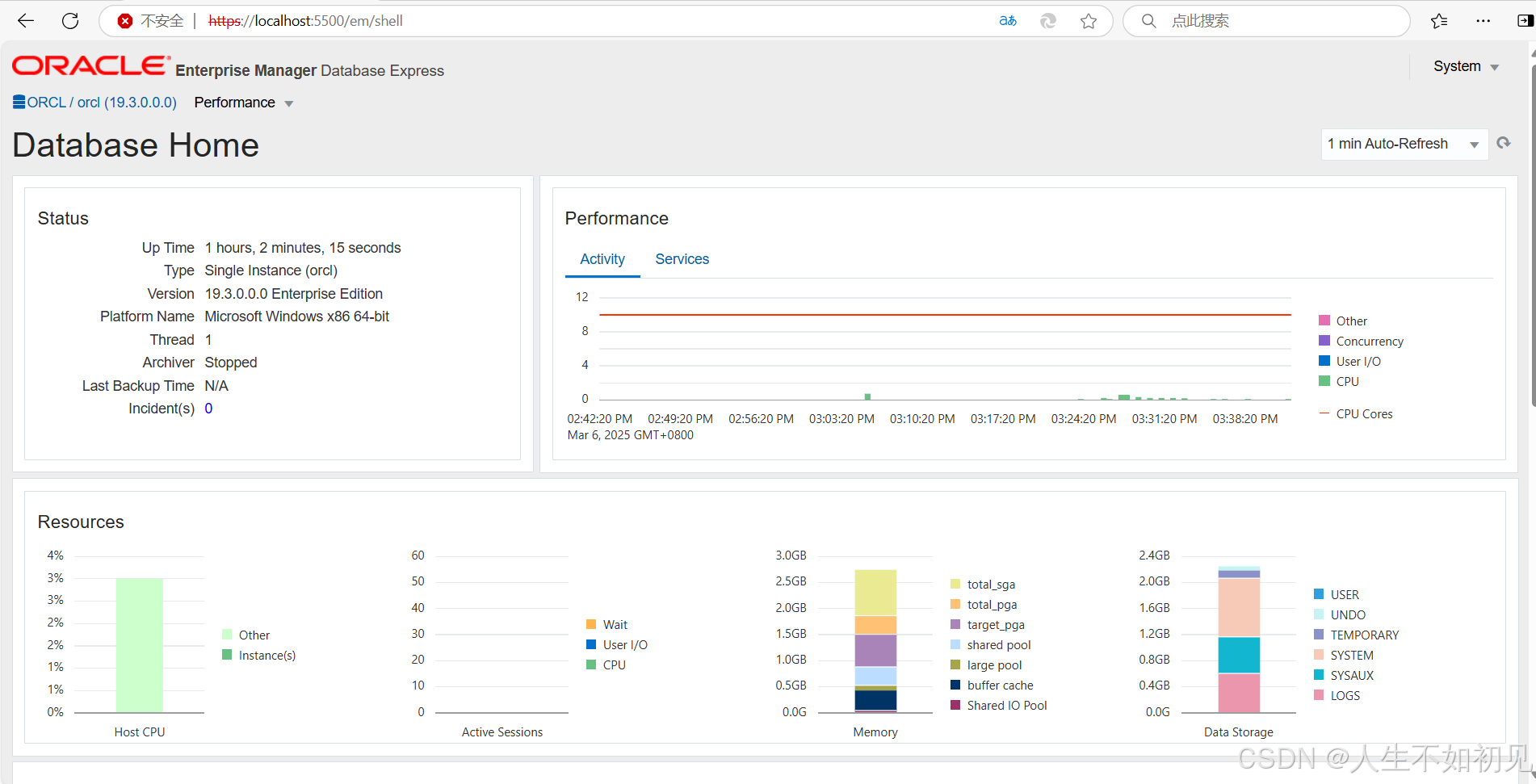
Oracle19c进入EM Express(Oracle企业管理器)详细步骤
以下是使用Oracle 19c进入Oracle Enterprise Manager Database Express(EM Express)的详细步骤: ### **步骤 1:确认EM Express配置状态** 1. **登录数据库服务器** 使用Oracle用户或管理员权限账户登录操作系统。 2. **查看EM…...

游戏引擎学习第140天
回顾并为今天的内容做准备 目前代码的进展到了声音混音的部分。昨天我详细解释了声音的处理方式,声音在技术上是一个非常特别的存在,但在游戏中进行声音混音的需求其实相对简单明了,所以今天的任务应该不会太具挑战性。 今天我们会编写一个…...
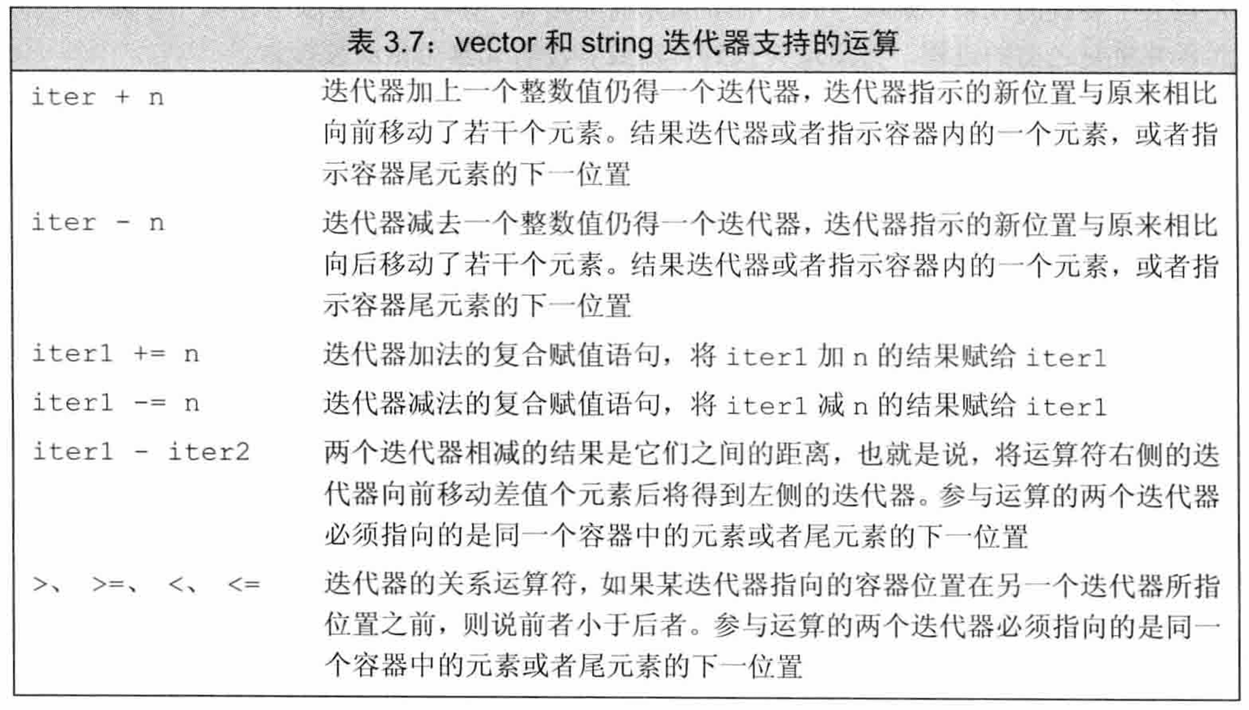
C++--迭代器(iterator)介绍---主要介绍vector和string中的迭代器
目录 一、迭代器(iterator)的定义 二、迭代器的类别 三、使用迭代器 3.1 迭代器运算符 3.2 迭代器的简单应用:使用迭代器将string对象的第一个字母改为大写 3.3 将迭代器从一个元素移动到另外一个元素 3.4 迭代器运算 3.5 迭代器的复…...
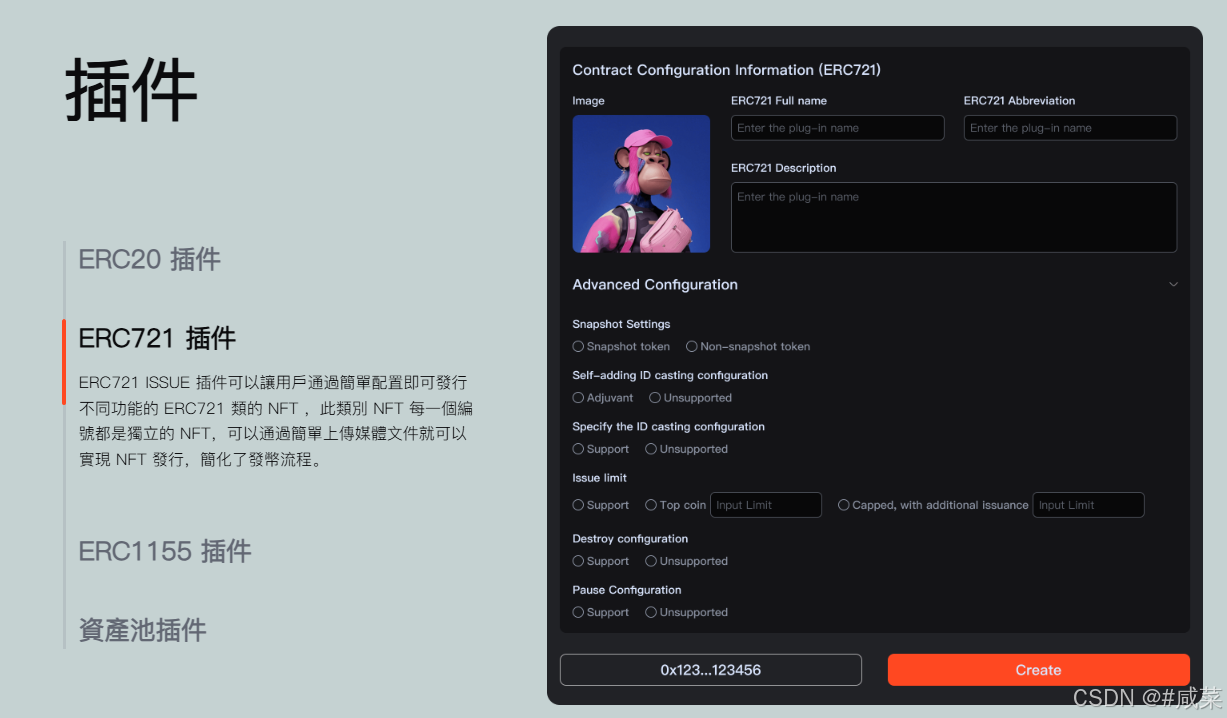
RuleOS:区块链开发的“新引擎”,点燃Web3创新之火
RuleOS:区块链开发的“新引擎”,点燃Web3创新之火 在区块链技术的浪潮中,RuleOS宛如一台强劲的“新引擎”,为个人和企业开发去中心化应用(DApp)注入了前所未有的动力。它以独特的设计理念和强大的功能特性&…...
机器学习之强化学习
引言 在人工智能的众多分支中,强化学习(Reinforcement Learning, RL) 因其独特的学习范式而备受关注。与依赖标注数据的监督学习或探索数据结构的无监督学习不同,强化学习的核心是智能体(Agent)通过与环境…...

基于 uni-app 和 Vue3 开发的汉字书写练习应用
基于 uni-app 和 Vue3 开发的汉字书写练习应用 前言 本文介绍了如何使用 uni-app Vue3 uview-plus 开发一个汉字书写练习应用。该应用支持笔画演示、书写练习、进度保存等功能,可以帮助用户学习汉字书写。 在线演示 演示地址: http://demo.xiyueta.com/case/w…...

每天五分钟深度学习PyTorch:向更深的卷积神经网络挑战的ResNet
本文重点 ResNet大名鼎鼎,它是由何恺明团队设计的,它获取了2015年ImageNet冠军,它很好的解决了当神经网络层数过多出现的难以训练的问题,它创造性的设计了跳跃连接的方式,使得卷积神经网络的层数出现了大幅度提升,设置可以达到上千层,可以说resnet对于网络模型的设计具…...
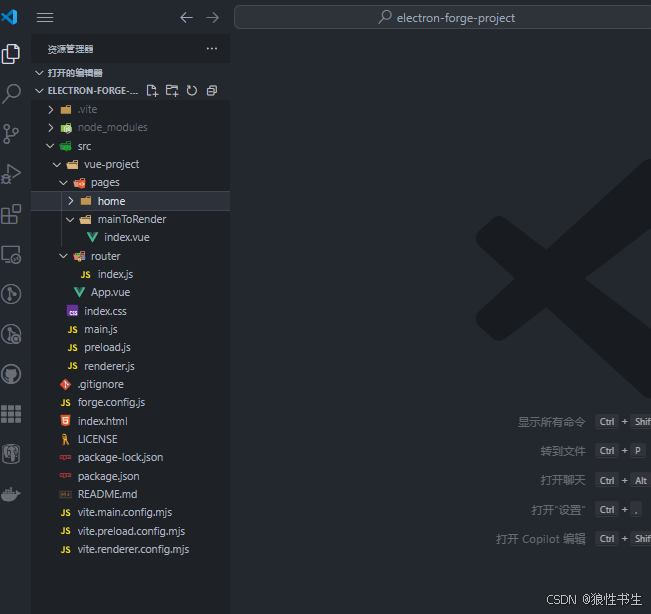
electron + vue3 + vite 主进程到渲染进程的单向通信
用示例讲解下主进程到渲染进程的单向通信 初始版本项目结构可参考项目:https://github.com/ylpxzx/electron-forge-project/tree/init_project 主进程到渲染进程(单向) 以Electron官方文档给出的”主进程主动触发动作,发送内容给渲…...

《白帽子讲 Web 安全》之身份认证
目录 引言 一、概述 二、密码安全性 三、认证方式 (一)HTTP 认证 (二)表单登录 (三)客户端证书 (四)一次性密码(OTP) (五)多因…...

postgrel
首先按照惯例,肯定是需要对PostgreSQL数据库进行一系列信息收集的,常用的命令有以下这些:-- 版本信息select version();show server_version;select pg_read_file(PG_VERSION, 0, 200);-- 数字版本信息包括小版号SHOW server_version_num;SEL…...
)
Java基础——java8+新特性——方法引用(::)
1. 什么是方法引用? 定义:Java 8 引入的语法糖,用于 简化 Lambda 表达式,直接引用已有的方法。 符号:使用 :: 双冒号操作符。 本质:将方法作为函数式接口的实例传。 2. 方法引用的四种类型 类型 语法 …...
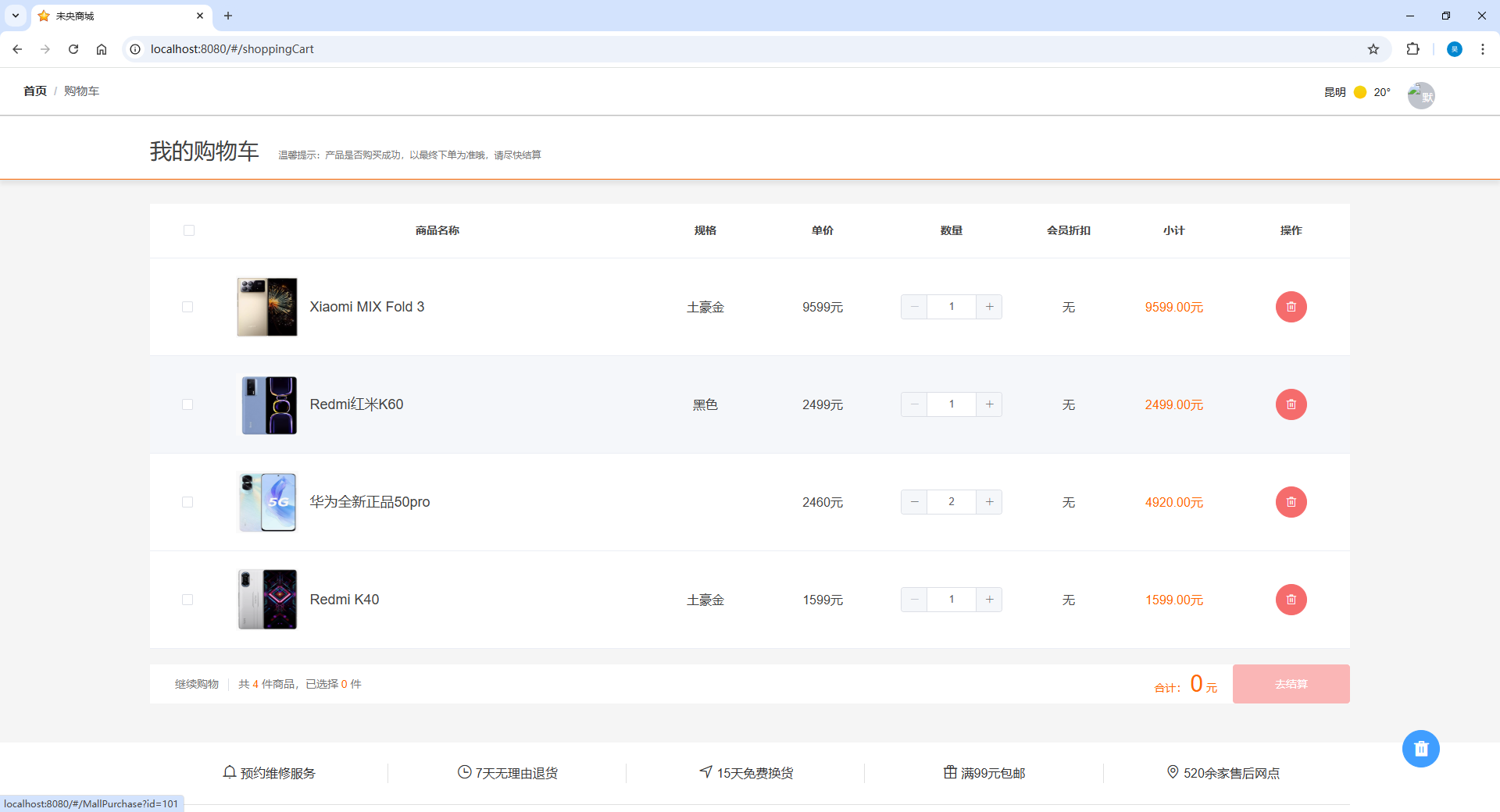
基于SpringBoot的商城管理系统(源码+部署教程)
运行环境 数据库:MySql 编译器:Intellij IDEA 前端运行环境:node.js v12.13.0 JAVA版本:JDK 1.8 主要功能 基于Springboot的商城管理系统包含管理端和用户端两个部分,主要功能有: 管理端 首页商品列…...

uniapp实现的个人中心页面(仿小红书)
采用 uniapp 实现的一款仿小红书个人中心页面模板,支持vue2、vue3, 同时适配H5、小程序等多端多应用。 简约美观大方 可到插件市场下载尝试: https://ext.dcloud.net.cn/plugin?id22516 示例...
)
K8s面试题总结(十一)
1.如何优化docker镜像的大小? 使用多阶段构建(multi-stage build)选择更小的基础镜像(如alpine)减少镜像层数,合并RUN命令 2.请解释Docker中的网络模式(如bridge,host,none) Bridgeÿ…...
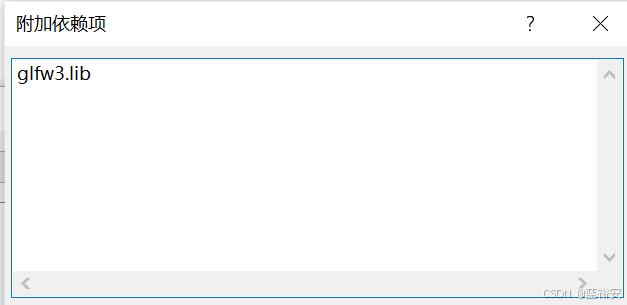
用CMake编译glfw进行OpenGL配置,在Visual Studio上运行
Visual Studio的下载 Visual Studio 2022 C 编程环境 GLFW库安装 GLFW官网地址 GLFW官网地址:https://www.glfw.org下载相应版本,如下图: CMake软件进行编译安装 下载CMake 下载的如果是源码包,需要下载CMake软件进行编译安装…...
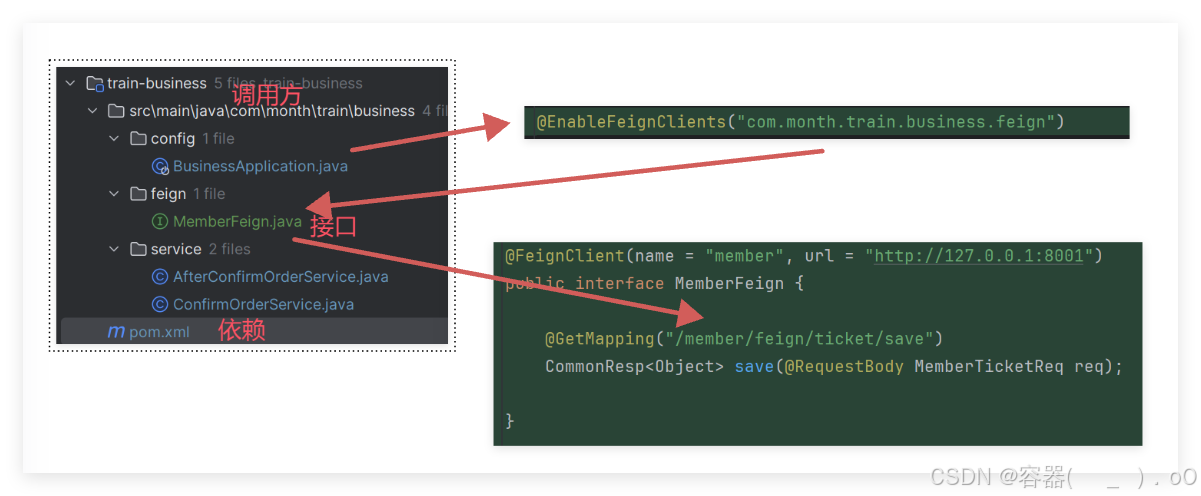
仿12306项目(4)
基本预定车票功能的开发 对于乘客购票来说,需要有每一个车次的余票信息,展示给乘客,供乘客选择,因此首个功能是余票的初始化,之后是余票查询,这两个都是控台端。对于会员端的购票,需要有余票查询…...
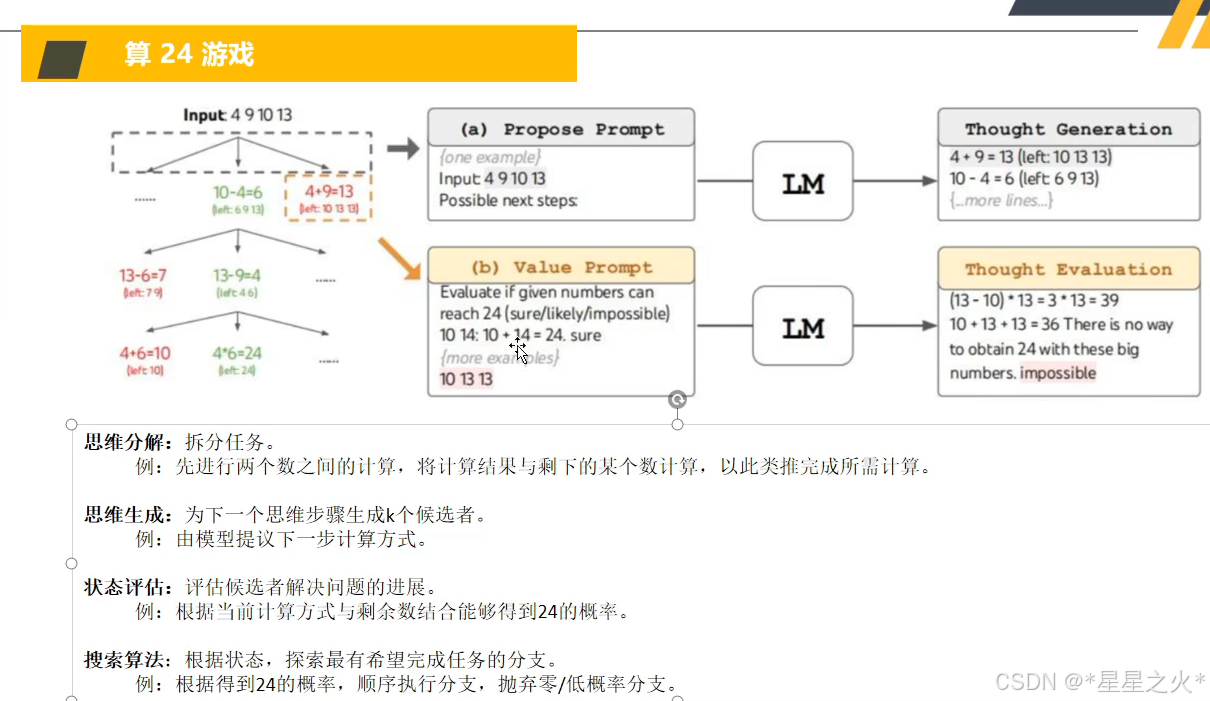
【GPT入门】第9课 思维树概念与原理
【GPT入门】第9课 思维树概念与原理 1.思维树概念与原理2. 算24游戏的方法 1.思维树概念与原理 思维树(Tree of Thought,ToT )是一种大模型推理框架,旨在解决更加复杂的多步骤推理任务,让大模型能够探索多种可能的解决…...

uniapp登录用户名在其他页面都能响应
使用全局变量 1、在APP.vue中定义一个全局变量,然后在需要的地方引用它; <script>export default {onLaunch: function() {console.log(App Launch)this.globalData { userInfo: {} };},onShow: function() {console.log(App Show)},onHide: fu…...

python打卡day49
知识点回顾: 通道注意力模块复习空间注意力模块CBAM的定义 作业:尝试对今天的模型检查参数数目,并用tensorboard查看训练过程 import torch import torch.nn as nn# 定义通道注意力 class ChannelAttention(nn.Module):def __init__(self,…...

.Net框架,除了EF还有很多很多......
文章目录 1. 引言2. Dapper2.1 概述与设计原理2.2 核心功能与代码示例基本查询多映射查询存储过程调用 2.3 性能优化原理2.4 适用场景 3. NHibernate3.1 概述与架构设计3.2 映射配置示例Fluent映射XML映射 3.3 查询示例HQL查询Criteria APILINQ提供程序 3.4 高级特性3.5 适用场…...

Python:操作 Excel 折叠
💖亲爱的技术爱好者们,热烈欢迎来到 Kant2048 的博客!我是 Thomas Kant,很开心能在CSDN上与你们相遇~💖 本博客的精华专栏: 【自动化测试】 【测试经验】 【人工智能】 【Python】 Python 操作 Excel 系列 读取单元格数据按行写入设置行高和列宽自动调整行高和列宽水平…...
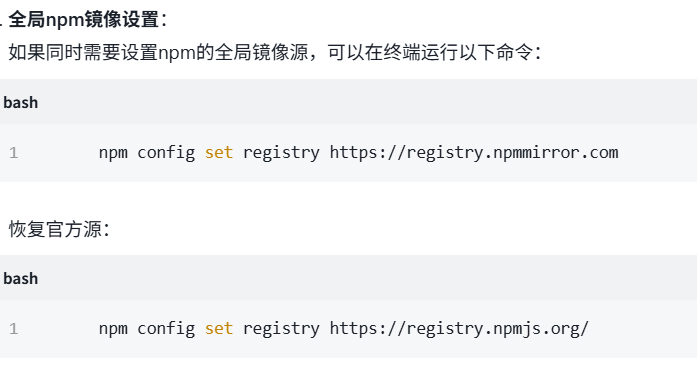
关于nvm与node.js
1 安装nvm 安装过程中手动修改 nvm的安装路径, 以及修改 通过nvm安装node后正在使用的node的存放目录【这句话可能难以理解,但接着往下看你就了然了】 2 修改nvm中settings.txt文件配置 nvm安装成功后,通常在该文件中会出现以下配置&…...
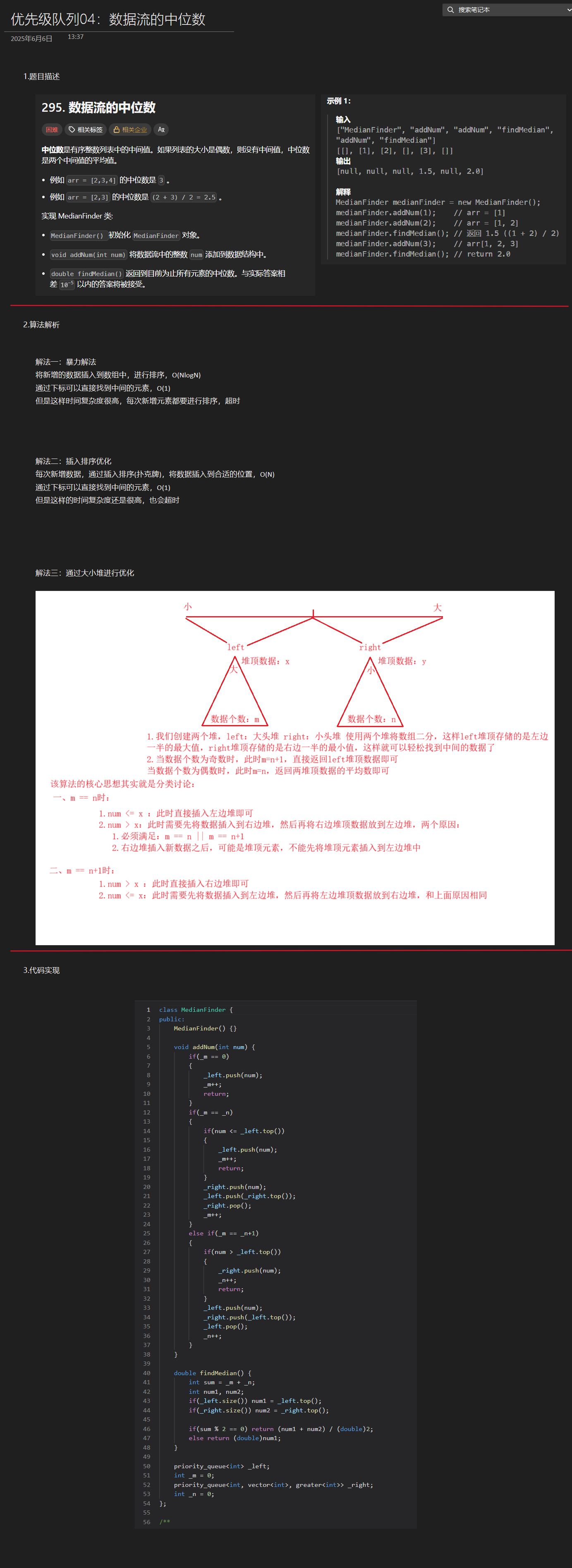
优选算法第十二讲:队列 + 宽搜 优先级队列
优选算法第十二讲:队列 宽搜 && 优先级队列 1.N叉树的层序遍历2.二叉树的锯齿型层序遍历3.二叉树最大宽度4.在每个树行中找最大值5.优先级队列 -- 最后一块石头的重量6.数据流中的第K大元素7.前K个高频单词8.数据流的中位数 1.N叉树的层序遍历 2.二叉树的锯…...
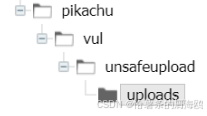
Unsafe Fileupload篇补充-木马的详细教程与木马分享(中国蚁剑方式)
在之前的皮卡丘靶场第九期Unsafe Fileupload篇中我们学习了木马的原理并且学了一个简单的木马文件 本期内容是为了更好的为大家解释木马(服务器方面的)的原理,连接,以及各种木马及连接工具的分享 文件木马:https://w…...
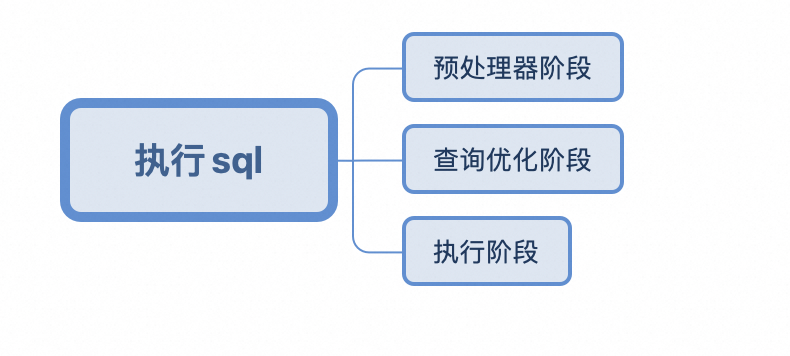
Mysql中select查询语句的执行过程
目录 1、介绍 1.1、组件介绍 1.2、Sql执行顺序 2、执行流程 2.1. 连接与认证 2.2. 查询缓存 2.3. 语法解析(Parser) 2.4、执行sql 1. 预处理(Preprocessor) 2. 查询优化器(Optimizer) 3. 执行器…...

AI语音助手的Python实现
引言 语音助手(如小爱同学、Siri)通过语音识别、自然语言处理(NLP)和语音合成技术,为用户提供直观、高效的交互体验。随着人工智能的普及,Python开发者可以利用开源库和AI模型,快速构建自定义语音助手。本文由浅入深,详细介绍如何使用Python开发AI语音助手,涵盖基础功…...

基于江科大stm32屏幕驱动,实现OLED多级菜单(动画效果),结构体链表实现(独创源码)
引言 在嵌入式系统中,用户界面的设计往往直接影响到用户体验。本文将以STM32微控制器和OLED显示屏为例,介绍如何实现一个多级菜单系统。该系统支持用户通过按键导航菜单,执行相应操作,并提供平滑的滚动动画效果。 本文设计了一个…...

数据库——redis
一、Redis 介绍 1. 概述 Redis(Remote Dictionary Server)是一个开源的、高性能的内存键值数据库系统,具有以下核心特点: 内存存储架构:数据主要存储在内存中,提供微秒级的读写响应 多数据结构支持&…...
